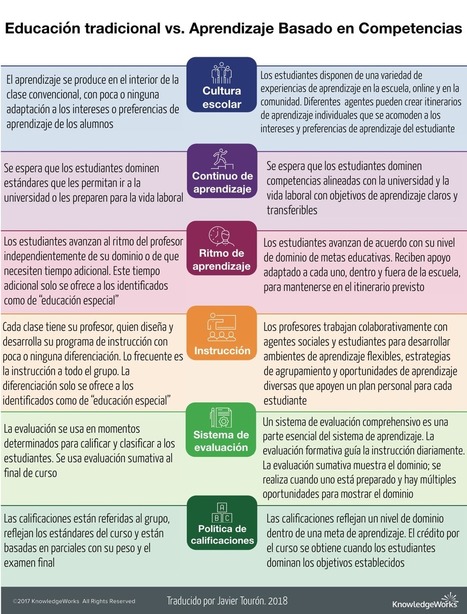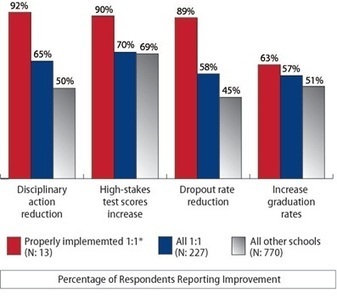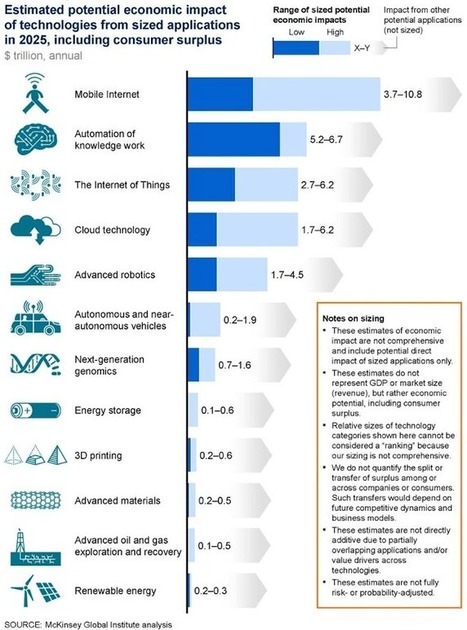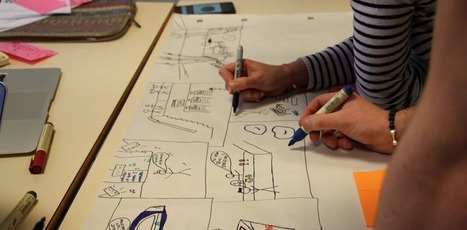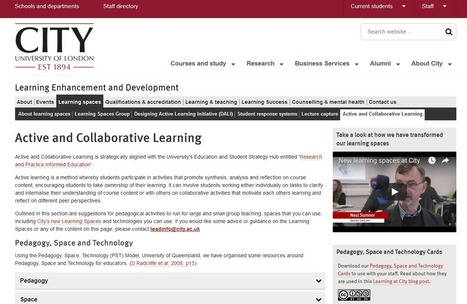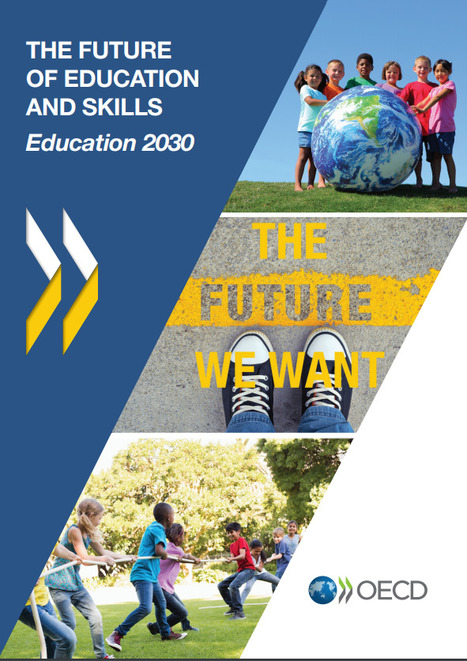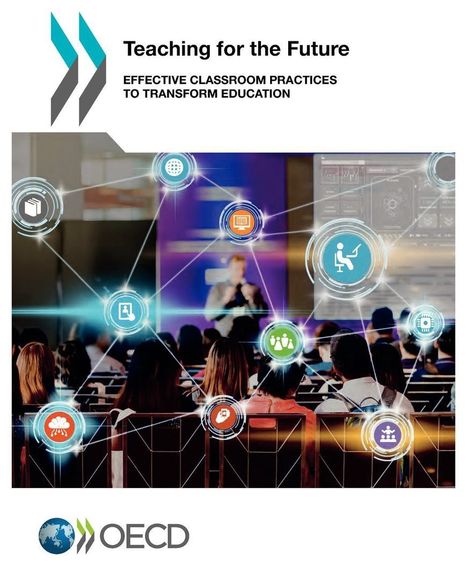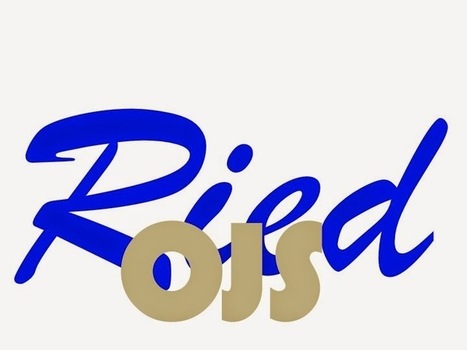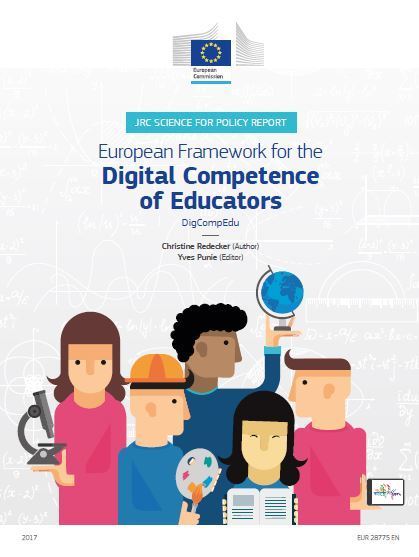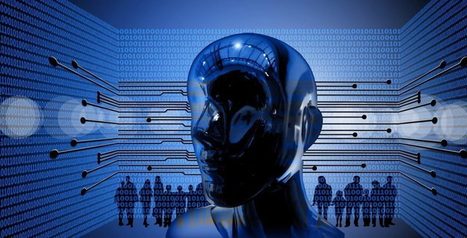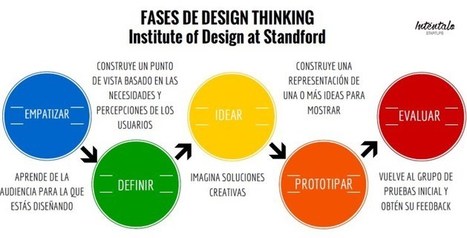 Your new post is loading...
 Your new post is loading...
Lo esencial de la educación basada en competencias no son, a mi modesto entender, las competencias en sí mismas, sino el enfoque global de la enseñanza que implica en diversas dimensiones críticas: el rol del profesor y el alumno; el aprendizaje dentro y fuera de la escuela; el papel esencial de la evaluación y, cómo no, el enfoque basado en el dominio o mastery learning. Para ver las relaciones entre estos aspectos, te sugiero estudiar esta entrada anterior del blog. También esta otra en la que reflexiono sobre las diferencias entre muchos de estos aspectos, en particular las diferencia entre estándares, objetivos, competencias y enseñanza para el dominio.
Via Gumersindo Fernández, Wilmer Ramírez
Project RED conducted a national study of education technology focused on student achievement and financial implications. The coalition of three research organizations surveyed and studied nearly 1,000 schools and uncovered a replicable design for successfully introducing technology into the classroom, improving student performance, and yielding cost benefits. This exciting research endeavor developed 11 “success measures” and 22 independent measures and incorporated these into a survey tool that was central to the project’s effort to identify and prioritize the factors that make some U.S. K-12 technology implementations perform dramatically better than others.
Via Marcel Lebrun
La integración efectiva del dispositivo móvil en la educación y en el aprendizaje
Via LGA
Whenever we analyze the landscape of higher education technology, we find a range of trends in various stages of development. There are topics with real staying power, such as learning space design (which has factored into our trends list for several years). Others have evolved over time: Virtual reality made our list in 2016, then expanded to include augmented and mixed reality in 2017, and this year makes up part of a broader concept of immersive learning. And while some topics, like video, have been around for ages, new developments are putting them into a different light.
To help make sense of it all, we asked a panel of four IT leaders from institutions across the country for their thoughts. Here's what they told us.
Via Edumorfosis
As educators, we have a singular responsibility to prepare all students for a rapidly changing job market, and to educate them to be architects of the world in which we live. In today’s economy, when the future of work is changing faster than our old models of education can accommodate, this is no easy task.
Via Nik Peachey, LGA
Lors d’atelier de créativité, chaque participant mobilise et développe des compétences créatives. La difficulté réside dans l’identification de ces compétences et dans leur évaluation.
Via Sandrine Decamps, Jesús Salinas, LGA
El primer número del volumen 21 de la RIED. Revista Iberoamericana de Educación a Distancia correspondiente a enero de 2018, abre precisamente el año en que la RIED, junto a su antecesora, la Revista Iberoamericana de Educación Superior a Distancia cumplen su 30 aniversario. Ambas revistas se configuraron como el órgano de diseminación científica de […]
Via LGA
4 Things Innovative Schools Have In Common by Steve Wheeler, Associate Professor, Plymouth Institute of Education A recent list of 13 innovative schools is interesting because it is so diverse. Clearly innovation and creativity is not one dimensional. Some of the schools on the list are considered innovative because of the way they use their learning …
Via Miloš Bajčetić
This blog post is personal short reflection of the work in the Learning Spaces theme at City, University of London over the past three years, where I have been an Educational Technologist. I entered the department which was bigger on the inside than the outside. Many adventures were had.
Via Elizabeth E Charles
|
This OECD Learning Framework 2030 offers a vision and some underpinning principles for the future of education systems . It is about orientation, not prescription. The learning framework has been co -created for the OECD Education 2030 project by government representatives and a growing community of partners , including thought leaders, experts, school networks, school leaders, teachers, students and youth groups, parents, universities, local organisations and s o- cial partners . Th is is work in progress and we invite you to join us in develop ing future -ready edu cation for all.
Via Tom D'Amico (@TDOttawa) , Miloš Bajčetić
Teachers are the most important school-related factor influencing student learning. Teachers can help level the playing field and provide opportunities for success to all their students. They can inspire students to innovate; to think and reflect and to work in collaboration with others. Good teachers can also stimulate and guide students' development so that their achievements go beyond their own expectations. Therefore, how teachers achieve this in the classroom is important to understand. Teaching for the Future: Effective Classroom Practices To Transform Education links research and data on key issues facing teachers today with teachers’ own experiences to overcome challenges and create an effective classroom. This report builds on the discussions and stories shared at the Qudwa Global Teachers’ Forum, organised by the Crown Prince of Abu Dhabi on 7-8 October 2017. It captures the efforts made by teachers, from across the world, to facilitate student learning and transform education to build a fairer, humane and inclusive world. The report provides an in-depth analysis of issues that teachers encounter in their day-to-day professional life, particularly those around equity and reducing personal and social disadvantage, building academic, social and emotional well-being of students through parental engagement and integrating information and communication technology in classrooms.
Via Gust MEES, Miloš Bajčetić
Motivación e innovación: Aceptación de tecnologías móviles en los maestros en formación José Carlos Sánchez-Prieto, Susan
Via LGA
Por Rosa García-Ruiz*, Ignacio Aguaded** y Antonio Bartolomé-Pina*** En estos últimos años, de profundos avances tecnológicos y de la universalización de los dispositivos, constatar … Sigue leyendo →
Via LGA
Face à l'arrivée du numérique, les enseignants ont besoin de développer de nouvelles compétences. Au niveau international et national, plusieurs cadres, des outils d'auto-évaluation et programmes de formation ont été développés pour décrire les facettes des compétences des enseignants avec des aides pour évaluer leurs compétences, identifier leurs besoins de formation et offrir une formation ciblée. Analysant et regroupant ces instruments, ce rapport présente un cadre européen commun pour la compétence numérique des éducateurs (DigCompEdu). DigCompEdu est un cadre de référence scientifiquement mis en place et qui qui aide à orienter les politiques et peut être directement adapté à la mise en œuvre d'outils et de programmes de formation régionaux et nationaux. Le cadre "DigCompEdu" européen s'adresse aux enseignants à tous les niveaux de l'éducation, de la petite enfance à l'éducation supérieure et à l'éducation des adultes, y compris la formation générale et professionnelle.
Via Michèle Drechsler, Marcel Lebrun
10 Innovative Learning Strategies For Modern Pedagogy by TeachThought Staff This is an excerpt from a report, produced in collaboration with SRI International, that proposes ten innovations that are already in currency but have not yet had a profound influence on education. You can read the full report, with in-depth explanations and examples …
Via Marta Torán
Los siguientes videos forman parte del curso Aprendizaje Basado en Proyectos del Centro Regional de Formación del Profesorado Castilla-La Mancha, e
Via César Layana, Javier Sánchez Bolado
Artificial intelligence is infiltrating conversations and not just in reference to popular culture. Rachelle Dene Poth talks about AI and how education can benefit from it.
Porque no conocían otra cosa, no concebían otra cosa. ¡Ya sabes…! Salir de la zona de confort y hacer tambalear los paradigmas de siempre. Como decía De Bono acerca de la creatividad: “romper con los patrones establecidos para mirar las cosas de otra forma”. Ahora fíjate en esta nueva apuesta de Nintendo… No sabemos qué …
Via Marta Torán
Um estudo organizado pelo Iede (Interdisciplinaridade e Evidências no Debate Educacional), com base em dados do Programa Internacional de Avaliação de Alunos (Pisa) de 2015, mostra que o Brasil tem a segunda pior conectividade nas escolas entre os países que participaram do levantamento.
Via Inovação Educacional
Across the globe, schools are rejecting the traditional model for education to better prepare kids for the future.
Via Miloš Bajčetić
|



 Your new post is loading...
Your new post is loading...

